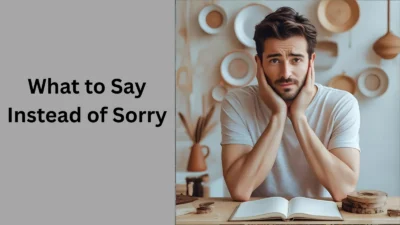Imagine you’re strolling through a vibrant Spanish market, the sun shining, and you need to catch a train. You glance at your watch, but how do you ask the time in Spanish? Learning how to say what time is it in Spanish can make your travels or conversations with Spanish-speaking friends so much easier!
Whether you’re a beginner or brushing up on your skills, asking for the time is a simple yet essential phrase to master. In this guide, we’ll break down how to ask for the time, share practical tips, and provide examples to help you sound confident.
By the end, you’ll be ready to ask the time anywhere, from Madrid to Mexico City. Let’s dive in and make learning Spanish fun and stress-free!
Why Asking the Time in Spanish Matters
Knowing how to say what time is it in Spanish opens doors to better communication. The phrase “¿Qué hora es?” is your key to connecting with locals or friends in Spanish-speaking countries. Imagine you’re at a café in Barcelona, and you need to know if you have time for another coffee. Asking the time politely shows respect and helps you blend in.
Example: Say, “Disculpe, ¿qué hora es?” (Excuse me, what time is it?) to a passerby. Avoid saying, “Hora, ¿qué es?” as it sounds abrupt and confusing. Practice this phrase before your trip to feel confident in real-life situations.
Use Case: You’re at a bus stop in Mexico, and the schedule is unclear. Asking “¿Qué hora es?” ensures you don’t miss your ride.
How to Pronounce “¿Qué Hora Es?”
Pronunciation is key when learning how to say what time is it in Spanish. The phrase “¿Qué hora es?” is pronounced as “Keh OR-ah ess?” Break it down: “Qué” sounds like “kay,” “hora” is “OR-ah,” and “es” is “ess.” Practice saying it slowly, then speed up to sound natural.
Example: When asking a shopkeeper, smile and say, “Por favor, ¿qué hora es?” (Please, what time is it?). Don’t mumble or say “Kwee hora?” as it may confuse the listener.
Use Case: You’re at a festival in Peru, and the music is loud. Speak clearly with “¿Qué hora es?” to confirm when the next event starts. Pair it with a friendly gesture to get a quick response.
Adding Politeness to Your Question
Politeness goes a long way in Spanish-speaking cultures. To make how to say what time is it in Spanish sound courteous, add phrases like “por favor” (please) or “disculpe” (excuse me). For example, “Disculpe, ¿qué hora es, por favor?” feels warm and respectful.
Example: At a museum in Argentina, say, “Señora, disculpe, ¿qué hora es?” to a staff member. Avoid demanding, “Dime la hora” (Tell me the time), as it sounds rude.
Use Case: You’re in a busy train station in Spain. Saying “Por favor, ¿qué hora es?” to a ticket agent helps you get a kind, quick answer while showing your manners.
Responding to the Time in Spanish
When someone answers your question, you’ll want to understand their response. After asking “¿Qué hora es?”, you might hear, “Son las dos” (It’s two o’clock) or “Es la una” (It’s one o’clock). Knowing these responses helps you keep the conversation flowing.
Example: If someone says, “Son las tres y media” (It’s three thirty), reply with “¡Gracias!” to show appreciation. Don’t respond with silence or “Okay”, as it might seem dismissive.
Use Case: At a park in Chile, you ask a jogger “¿Qué hora es?” They reply, “Son las cuatro” (It’s four o’clock). A simple “Gracias, muy amable” (Thanks, very kind) keeps the interaction friendly.
Common Mistakes to Avoid
Even simple phrases like how to say what time is it in Spanish can trip you up. A common mistake is forgetting the question mark in “¿Qué hora es?” or saying “Qué es hora?”, which means “What is time?” and sounds odd. Another error is mispronouncing “hora” as “HARA” instead of “OR-ah.”
Example: Say, “¿Qué hora es?” clearly. Avoid “Qué hora está?” as it’s incorrect and might confuse native speakers.
Use Case: In a classroom in Colombia, you ask the teacher “¿Qué hora es?” If you say “Hora es qué?”, they might not understand. Practice the right order to avoid embarrassment.
Practicing in Real-Life Scenarios
The best way to master how to say what time is it in Spanish is to practice in everyday situations. Try asking the time at a local market, a bus stop, or even with a Spanish-speaking friend. The more you use “¿Qué hora es?”, the more natural it feels.
Example: At a street fair in Ecuador, approach a vendor and say, “Disculpe, ¿qué hora es?” Don’t just point at your watch and say nothing—it’s less engaging.
Use Case: You’re hiking in Costa Rica and need to know if it’s time to head back. Asking a guide “Por favor, ¿qué hora es?” builds confidence and gets you the info you need.
Final Thoughts
Learning how to say what time is it in Spanish is a small but powerful step toward fluency. With the phrase “¿Qué hora es?”, you can navigate new places, connect with people, and feel more at home in Spanish-speaking environments.
From polite phrasing to clear pronunciation, this guide has you covered. Practice daily, stay polite, and don’t be afraid to make mistakes—they’re part of the journey! Soon, asking for the time in Spanish will feel as easy as checking your watch. Keep practicing, and you’ll be chatting like a local in no time.




